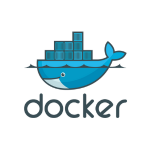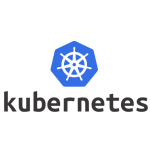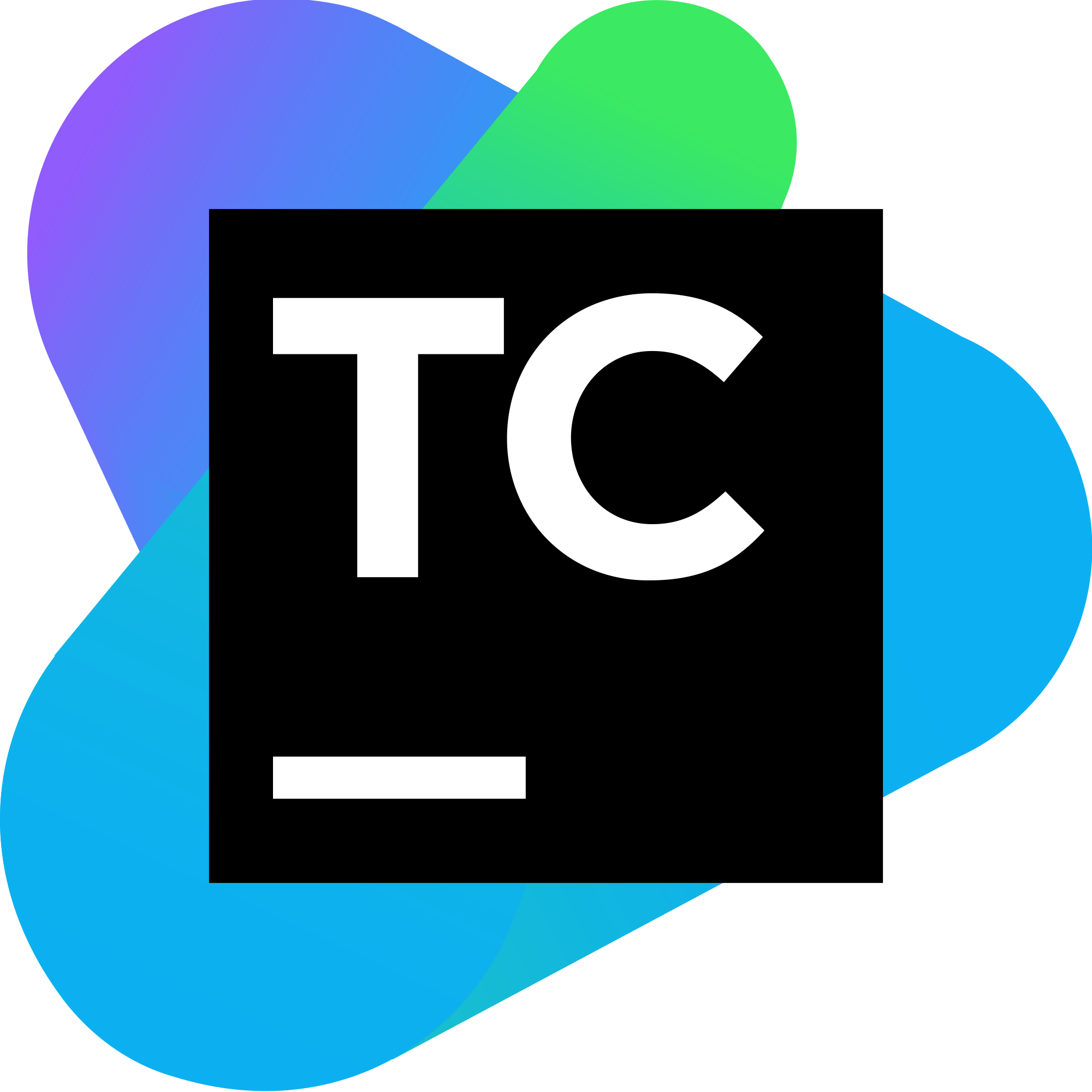Your personalized Java Developer Roadmap for success in coding. Become an awesome Java Dev with our guide on mastering coding foundations, technology trends and more!
More...
Are you an aspiring Java developer looking to become an expert in the field? Look no further! In this article, we present a comprehensive Java Developer Roadmap that will guide you on your journey from being a novice to becoming a Java expert in 2024.
Our roadmap covers the crucial skills, tools, frameworks, APIs, and technologies that every Java developer should learn.
Key Takeaways
Mandatory Skills for Devs Using A Java Developer Roadmap
Every Java developer, whether a core Java developer or a full-stack Java developer, must possess a set of mandatory skills. These skills are essential for building reliable and scalable applications. Let's take a closer look at the key skills that every Java developer should have:
1. Proficiency in Git and GitHub
Version control is crucial for managing code changes and collaborating with other developers. Java developers should be well-versed in Git and GitHub, widely used tools for version control. Proficiency in these tools enables efficient code management, seamless collaboration, and effective project tracking.
2. Knowledge of Linux command line
For web development using Java, familiarity with the Linux command line is vital. It allows developers to perform various tasks, such as managing files and directories, configuring servers, and executing commands. A solid understanding of the Linux command line ensures smooth development and troubleshooting processes.
3. Understanding of data structures and algorithms
Data structures and algorithms form the foundation of computer science. Java developers must have a deep understanding of core data structures, such as arrays, linked lists, stacks, queues, and trees, along with knowledge of different algorithms for efficient problem-solving. This expertise enables developers to design optimized and performant applications.
4. Familiarity with HTTP/HTTPS protocols
In web development, Java developers need to be familiar with the HTTP/HTTPS protocols. Understanding these protocols allows developers to interact with web servers and build applications that communicate effectively over the internet. It encompasses knowledge of request/response cycles, RESTful APIs, and handling client-server interactions.
5. Knowledge of computer science fundamentals
Java developers should have a strong grasp of computer science fundamentals, including object-oriented programming, software engineering principles, and problem-solving techniques. This knowledge helps developers write clean, maintainable code that follows best practices and delivers optimal performance.
6. Good grasp of design patterns
Design patterns provide proven solutions to recurring design problems in software development. Java developers should have a good understanding of design patterns such as Singleton, Factory, Observer, and MVC. Applying design patterns enhances code readability, maintainability, and scalability, resulting in high-quality applications.
Mandatory Skills for Java Developers Summary
Mandatory Skills | Description |
|---|---|
Git and GitHub | Proficiency in version control and collaboration |
Linux command line | Familiarity with Linux command line for web development |
Data structures and algorithms | Understanding of core data structures and algorithms |
HTTP/HTTPS protocols | Familiarity with web protocols for effective communication |
Computer science fundamentals | Knowledge of object-oriented programming and software engineering principles |
Design patterns | Good grasp of design patterns for building high-quality applications |
Tools in a Java Developer Roadmap
In the Java developer roadmap, it is essential to have a good understanding of various tools. These include an Integrated Development Environment (IDE) such as IntelliJ IDEA or Eclipse, build tools like Maven or Gradle, containers like Docker and Kubernetes, CI/CD tools like Jenkins and TeamCity, and infrastructure automation tools like Ansible.





Java Developer Roadmap: JDK APIs
As part of the Java Developer Roadmap, it is crucial to develop a deep understanding of the Java Development Kit (JDK) APIs. These APIs serve as the building blocks for Java developers and play a fundamental role in developing robust and efficient applications.
Java Collections Framework
The Java Collections framework provides a comprehensive set of classes and interfaces for working with collections of objects. It includes data structures such as lists, sets, and maps, along with algorithms for manipulating and traversing these data structures. Mastering the Java Collections framework is essential for effective data storage and retrieval in Java applications.
Java Concurrency
Concurrency is a critical aspect of modern application development, and the Java Concurrency API provides the tools and constructs necessary for writing concurrent and multithreaded code. By understanding the Java Concurrency API, developers can effectively manage threads, synchronize data access, and handle concurrent operations.
Java IO
The Java IO API enables developers to work with input and output streams, files, and other I/O operations. It provides a way to read from and write to files, network sockets, and other input/output sources. A sound understanding of Java IO is vital for handling data storage, retrieval, and communication in Java applications.
Java 8 APIs
Java 8 introduced several significant updates to the Java language and API, including new features and enhancements that improve developer productivity and application performance. Developers should familiarize themselves with the Java 8 APIs, including the Stream API for efficient data processing, the Date and Time API for working with dates and times, and the Lambda Expressions API for writing concise and functional code.
API | Description |
|---|---|
Java Collections Framework | Proficiency in version control and collaboration |
Java Concurrency | Familiarity with Linux command line for web development |
Java IO | Understanding of core data structures and algorithms |
Java 8 APIs | Familiarity with web protocols for effective communication |
Java Developer Roadmap: Frameworks and Libraries
To become a Java expert, it is crucial for developers to explore and master popular Java frameworks and libraries. These tools play a key role in building scalable and reliable Java applications. Below, we highlight three widely used frameworks:
Spring
Spring is a powerful Java framework that provides a comprehensive toolkit for developing robust and enterprise-grade applications. It offers features such as dependency injection, aspect-oriented programming, and support for various database technologies. Spring's modular design allows developers to easily integrate it into their projects and build applications in a scalable and efficient manner.
Hibernate
Hibernate is an object-relational mapping (ORM) framework that simplifies database access for Java applications. It eliminates the need for writing complex SQL queries by providing an intuitive and efficient way to map Java objects to database tables. Hibernate's caching mechanisms and query optimization techniques enhance application performance, making it a popular choice among developers.
Apache Camel
Apache Camel is an open-source integration framework that enables developers to integrate different systems and applications using a variety of protocols and message formats. Camel provides a rich set of components and routing capabilities, allowing developers to easily create flexible and extensible integration solutions. It simplifies the complexity of integrating disparate systems, making it an essential tool in enterprise application development.
Framework/Library | Description |
|---|---|
Spring  | A powerful Java framework for building enterprise-grade applications. |
Hibernate  | An ORM framework that simplifies database access for Java applications. |
Apache Camel | An integration framework for connecting different systems and applications. |
Moreover, exploring java game engines like JMonkeyEngine can offer insightful perspectives into the realm of game development, applying Java in designing immersive gaming experiences.
Java Developer Roadmap: Web Development
The Java Developer Roadmap includes a dedicated focus on web development using Java technologies. Aspiring developers will learn essential skills and frameworks required to build dynamic and interactive web applications.
Servlets
Servets are the backbone of Java-based web development. They handle user requests and generate dynamic web content by extending the capabilities of a web server. By mastering Servlets, developers can create robust and scalable web applications.
JSP (JavaServer Pages)
JSP is a server-side technology that allows Java developers to embed Java code and other dynamic elements directly into HTML pages. With JSP, developers can build dynamic web pages, handle user input, and perform database interactions.
Spring MVC
Spring MVC is a powerful framework that simplifies the development of web applications by providing a structured approach and comprehensive tools. Developers can leverage the Spring MVC framework to create scalable and maintainable web applications.
Technology | Description |
|---|---|
Servlets | Handles user requests and generates dynamic web content |
JSP | Embeds Java code and dynamic elements into HTML pages |
Spring MVC | Provides a structured approach and comprehensive tools for web development |
Java Developer Roadmap: Building Desktop Applications
In our Java Developer Roadmap, we understand the importance of building desktop applications. With JavaFX, developers can create cross-platform desktop applications that provide a seamless user experience. JavaFX allows for designing captivating user interfaces and handling events effectively.
Developers can unleash their creativity and build powerful desktop applications with ease. Whether you want to create a productivity tool, a multimedia application, or a complex enterprise system, JavaFX offers the necessary tools and capabilities.
JavaFX provides a rich set of libraries and APIs that enable developers to create visually appealing and interactive user interfaces. With its declarative programming model and scene graph rendering, developers can easily design layouts, apply styles, and handle user input.
JavaFX is built on top of Java, which makes it seamlessly integrate with other Java technologies and libraries. This allows developers to benefit from the extensive Java ecosystem while building desktop applications.
Furthermore, JavaFX supports multiple platforms, including Windows, macOS, and Linux, allowing developers to reach a wider audience. With its native look and feel, JavaFX applications blend seamlessly with the operating system, providing a familiar and intuitive user experience.
Benefits of Building Desktop Applications with JavaFX
Benefits | Description |
|---|---|
Cross-platform compatibility | JavaFX applications can run on multiple operating systems, increasing the reach and accessibility of your software. |
Rich User Interface | JavaFX provides a wide range of UI controls, CSS styling, and 2D/3D graphics capabilities, enabling developers to create visually stunning and interactive applications. |
Ease of Development | JavaFX simplifies the development process with features like declarative markup language (FXML), scene graph rendering, and robust event handling. |
Integration with Java ecosystem | As JavaFX is built on Java, it seamlessly integrates with other Java technologies and libraries, allowing developers to leverage existing tools and frameworks. |
Native Look and Feel | JavaFX applications have a native look and feel, providing users with a consistent and familiar experience across different platforms. |
The next section of our Java Developer Roadmap explores Android development, where Java developers can leverage their skills to build mobile applications using Android Studio.
Java Developer Roadmap: Android Development
Android development is an essential aspect of the Java Developer Roadmap. With Java being the primary language for developing Android applications, it opens up opportunities for developers to build mobile applications for the largest mobile platform in the world.
One must familiarize themselves with Android Studio. Android Studio is the official integrated development environment (IDE) for Android application development. It provides a powerful set of tools and features to streamline the development process and build high-quality mobile applications.
In addition to Java programming, learning the Android Software Development Kit (SDK) is crucial. The SDK provides developers with the necessary libraries, APIs, and tools to create innovative and feature-rich mobile applications. By leveraging the capabilities of the Android SDK, developers can harness the full potential of the Android platform and deliver engaging user experiences.
Furthermore, understanding key concepts in Android development such as activities, intents, layouts, and resources is essential. Activities serve as the building blocks of an Android application, representing individual screens or user interfaces. Intents facilitate communication between different components of an application, enabling seamless navigation and data exchange. Layouts determine the visual structure of an application, while resources provide access to external assets such as images, strings, and styles.
Key Components of Android Development | Description |
|---|---|
Android Studio | An integrated development environment (IDE) specifically designed for Android app development that provides tools and features for streamlined development. |
Android Software Development Kit (SDK) | A set of libraries, APIs, and tools that allow developers to build Android applications and access the features of the Android platform. |
Activities | The building blocks of an Android application, representing individual screens or user interfaces. |
Intents | Mechanisms for communication between different components of an Android application, facilitating navigation and data exchange. |
Layouts | Determine the visual structure of an Android application, defining how user interface elements are arranged. |
Resources | Provide access to external assets such as images, strings, and styles that are used in an Android application. |
Java Developer Roadmap: Unit Testing and TDD
Writing robust tests is a crucial skill for any developer. As part of the Java Developer Roadmap, we emphasize the importance of unit testing and test-driven development (TDD) using tools like JUnit. By mastering these testing techniques, Java developers can ensure the quality and reliability of their code.
Unit testing involves creating small, independent tests for individual units of code to verify that they function correctly. It helps identify and fix bugs early in the development process, reducing the likelihood of issues in the production environment. Unit tests also provide documentation and examples of how to use the code, making it easier for other developers to understand and work with.
Test-driven development (TDD) is an approach that emphasizes writing tests before writing the code. It follows a cycle of writing a failing test, implementing the code to pass the test, and then refactoring the code to improve its design. TDD helps developers define clear requirements and expectations for their code, leading to more modular and maintainable solutions.
To facilitate unit testing and TDD in Java, the industry-standard tool is JUnit. JUnit is a powerful testing framework that provides a wide range of assertions, annotations, and utilities for writing effective tests. It integrates seamlessly with popular development environments like IntelliJ IDEA and Eclipse, making it easy to run tests and analyze the results.
With JUnit, Java developers can:
Incorporating unit testing and TDD into their development process, Java developers can improve code quality, accelerate development cycles, and build more reliable software. With JUnit as a valuable tool in their arsenal, they can confidently test their code and ensure that it meets the desired specifications.
Java Developer Roadmap: Version Control and Collaboration
Version control and collaboration are crucial skills for Java developers. As part of the Java Developer Roadmap, it is essential to learn how to effectively manage code versions and collaborate with other developers on projects. This involves understanding and utilizing version control systems like Git and project management platforms like GitHub.
Version Control: Git is a widely used distributed version control system that allows developers to track changes in their codebase, collaborate with others, and easily revert to previous versions if needed. By using Git, Java developers can ensure that changes are implemented seamlessly and securely, reducing the risk of code conflicts and loss of valuable work. Version control also enables developers to work on different branches simultaneously and merge changes seamlessly once they are ready.
Collaboration: GitHub, a web-based platform built on top of Git, offers a collaborative environment for developers to share code, review changes, and work together on projects. It provides a centralized repository where Java developers can manage their codebase, track issues and bugs, and facilitate collaboration with other team members. GitHub also offers features like pull requests, code reviews, and issue tracking, enhancing productivity and fostering effective teamwork.
Key Benefits of Version Control and Collaboration
- 1Code versioning: Keep track of changes and easily revert if needed.
- 2Collaboration: Work with other developers simultaneously and merge changes seamlessly.
- 3Code review: Facilitate peer code reviews for quality assurance.
- 4Issue tracking: Track and manage bugs and feature requests efficiently.
- 5Project management: Maintain a centralized repository and streamline development processes.
Java Developer Roadmap: Deployment and Cloud Computing
As Java developers progress along their roadmap, it becomes crucial for them to understand the concepts and techniques related to deployment and cloud computing. By mastering these skills, developers can ensure that their applications are efficiently deployed and take advantage of the scalability and flexibility offered by cloud platforms.
One important tool that Java developers should familiarize themselves with is Docker. Docker allows for the creation and deployment of lightweight, portable containers that encapsulate the application and its dependencies. Using Docker can simplify deployment processes and ensure consistency across different environments.
Another aspect of deployment is the use of cloud databases. These databases provide a scalable and reliable solution for storing and retrieving data. By utilizing cloud databases, Java developers can offload the management and maintenance of their databases to cloud service providers, allowing them to focus on developing their applications.
Deployment Option | Advantages | Examples |
|---|---|---|
Traditional On-Premises | Private data centers, On-premises servers | |
Public Cloud | Amazon Web Services (AWS), Microsoft Azure, Google Cloud Platform (GCP) | |
Hybrid Cloud | A combination of private and public cloud platforms |
This table highlights the advantages of different deployment options and cloud computing platforms. Each option has its own benefits and considerations, and Java developers must make informed choices based on their specific requirements and project needs.
FAQ
What does the Java Developer Roadmap entail?
The Java Developer Roadmap is a comprehensive guide that outlines the essential skills, tools, frameworks, APIs, and technologies that Java developers should learn to become experts by 2024.
What are the mandatory skills for Java developers?
Java developers, whether they specialize in core Java or full-stack development, must have proficiency in Git and GitHub for version control, knowledge of the Linux command line for web development, a strong understanding of data structures and algorithms, familiarity with HTTP/HTTPS protocols for web development, and a good grasp of design patterns.
Which tools are included in the Java Developer Roadmap?
The Java Developer Roadmap includes essential tools such as Integrated Development Environments (IDEs) like IntelliJ IDEA or Eclipse, build tools like Maven or Gradle, containers like Docker and Kubernetes, Continuous Integration/Continuous Deployment (CI/CD) tools like Jenkins and TeamCity, and infrastructure automation tools like Ansible.
What are the key JDK APIs covered in the Java Developer Roadmap?
The Java Developer Roadmap focuses on important JDK APIs such as the Java Collections framework, Java Concurrency, Java IO, and Java 8 APIs. These APIs provide the foundation for building robust and efficient Java applications.
Which frameworks and libraries should Java developers learn?
Java developers should explore popular frameworks and libraries like Spring, Hibernate, and Apache Camel. These frameworks are widely used in the industry to build scalable and reliable Java applications.
What is covered in the web development section of the Java Developer Roadmap?
The web development section covers the use of Servlets and JSPs for building dynamic web applications, as well as modern frameworks like Spring MVC. This enables developers to create interactive and user-friendly web applications using Java technologies.
How does the Java Developer Roadmap address building desktop applications?
The roadmap includes learning JavaFX, which allows developers to design user interfaces and handle events for cross-platform desktop applications that offer a seamless user experience.
Does the Java Developer Roadmap include Android development?
Yes, the roadmap covers Android development. Java is a primary language for developing Android applications, and developers can use tools like Android Studio to learn how to build mobile applications for the largest mobile platform in the world.
What testing techniques are emphasized in the Java Developer Roadmap?
The roadmap focuses on unit testing and test-driven development (TDD) using tools like JUnit. By mastering these techniques, Java developers can ensure the quality and reliability of their code.
How does the Java Developer Roadmap guide developers in version control and collaboration?
The roadmap emphasizes the use of Git and GitHub for version control and project management. Java developers learn how to effectively collaborate on projects using these tools.
How does the Java Developer Roadmap address deployment and cloud computing?
The roadmap teaches developers how to deploy applications using tools like Docker and utilize cloud databases for efficient data storage and retrieval. It also covers cloud computing concepts and technologies, enabling developers to leverage the scalability and flexibility of the cloud.
What career options are available for Java developers?
Java developers have various career options, including roles such as junior developer, senior developer, and Java web developer. Each role offers unique opportunities for professional growth and advancement in the field of Java development.
